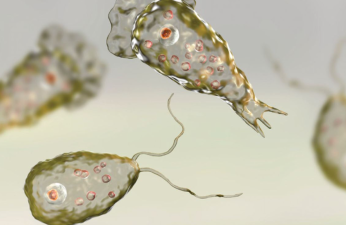The vast majority of rare diseases are difficult to treat, yet many patients face the dilemma of having no cure. Approximately 80% of rare diseases are hereditary, and approximately 50% develop at birth or during childhood. They often present with chronic, progressive symptoms, affecting multiple systems and organs, making them complex and difficult to diagnose.
How much do you know about rare diseases? What are the causes of rare diseases?
Medical literature indicates that everyone has 5-10 defective genes. If both parents share the same defective gene, there's a chance of having a child with a rare disease. While the probability is only one in 10,000, or even lower, for families experiencing this, it's a 100% chance. Rare diseases are not far away from us; as long as there's life, there's a chance of developing a rare disease.

What are the factors that influence rare diseases?
A previous report noted that when a patient develops a rare disease, the impact is felt not only by themselves but also by their entire family. If we add up all rare disease types and the families of patients, one in every 10 to 20 people in society is affected by a rare disease or a relative with a rare disease. Therefore, the combined burden of rare diseases on society is enormous.
But no minority group should be neglected, and this applies equally to patients with rare diseases. When clinicians analyze and synthesize a wide range of diseases, rare diseases are often the last to be discovered or diagnosed. This has actually advanced our understanding of the diagnosis and differential diagnosis of many other diseases.
To understand a rare disease, we must have a broad understanding of many so-called common or uncommon diseases. After ruling them out, we can then perform specialized diagnostics to reach a correct conclusion. This will significantly enhance our understanding of many diseases. Rare diseases serve as a research gateway that can benefit a wider range of people with common diseases.
So what are the factors that contribute to rare diseases?
Rare diseases are caused by multiple factors. Genetics is the most important, but environmental factors also play a role. There are also rare diseases caused by a combination of environmental and genetic factors.
For example, neurofibromatosis type 1 has a 100% penetrance. What does this mean? It means that all patients with adverse genes will develop the clinical manifestations of this rare disease. However, for many diseases, penetrance is not necessarily 100%; certain conditions may trigger specific manifestations.
In this case, the onset of the disease may be determined by both the environment and genes.

The Significance of Focusing on Rare Diseases
- Focusing on rare diseases promotes scientific research and the development of medical technology
Many rare diseases are hereditary, so research on rare diseases can help us better understand genes and human genetics. By studying rare diseases, scientists can discover new genes and disease mechanisms, and develop new treatments and drugs. These findings will further promote the development and application of medical technology, benefiting not only patients with rare diseases but also the general public.
- Focusing on rare diseases improves medical skills and diagnostic capabilities.
Because rare diseases are so rare, doctors may not encounter them frequently. This requires doctors to have higher medical skills and diagnostic capabilities to diagnose and treat rare diseases more quickly. This also helps doctors better understand different diseases and their causes, improving medical standards and quality.
- Focusing on rare diseases can strengthen the medical system and public health.
Since the treatment of rare diseases often requires significant time and effort, the efficient utilization and allocation of medical resources is particularly important. Medical services for rare diseases require greater professionalism and coordination, thereby promoting the optimization and upgrading of the medical system and improving public health.
- Focusing on rare diseases can promote social inclusion and reduce discrimination.
People with rare diseases are also part of society and deserve public support and understanding. Strengthening publicity and education on rare diseases can increase public awareness and understanding of these individuals, promote social inclusion, reduce discrimination, and foster a more inclusive and equitable social environment.







